NeoNet
Thomas Huet, Niccolò Mazzucco, Miriam Cubas Morera, Juan Gibaja, F. Xavier Oms, António Faustino Carvalho, Ana Catarina Basilio, Elías López-Romero
NeoNet serves as a framework to study the transition from the Late Mesolithic to the Early Neolithic through spatio-temporal modeling of radiocarbon dates and by offering:
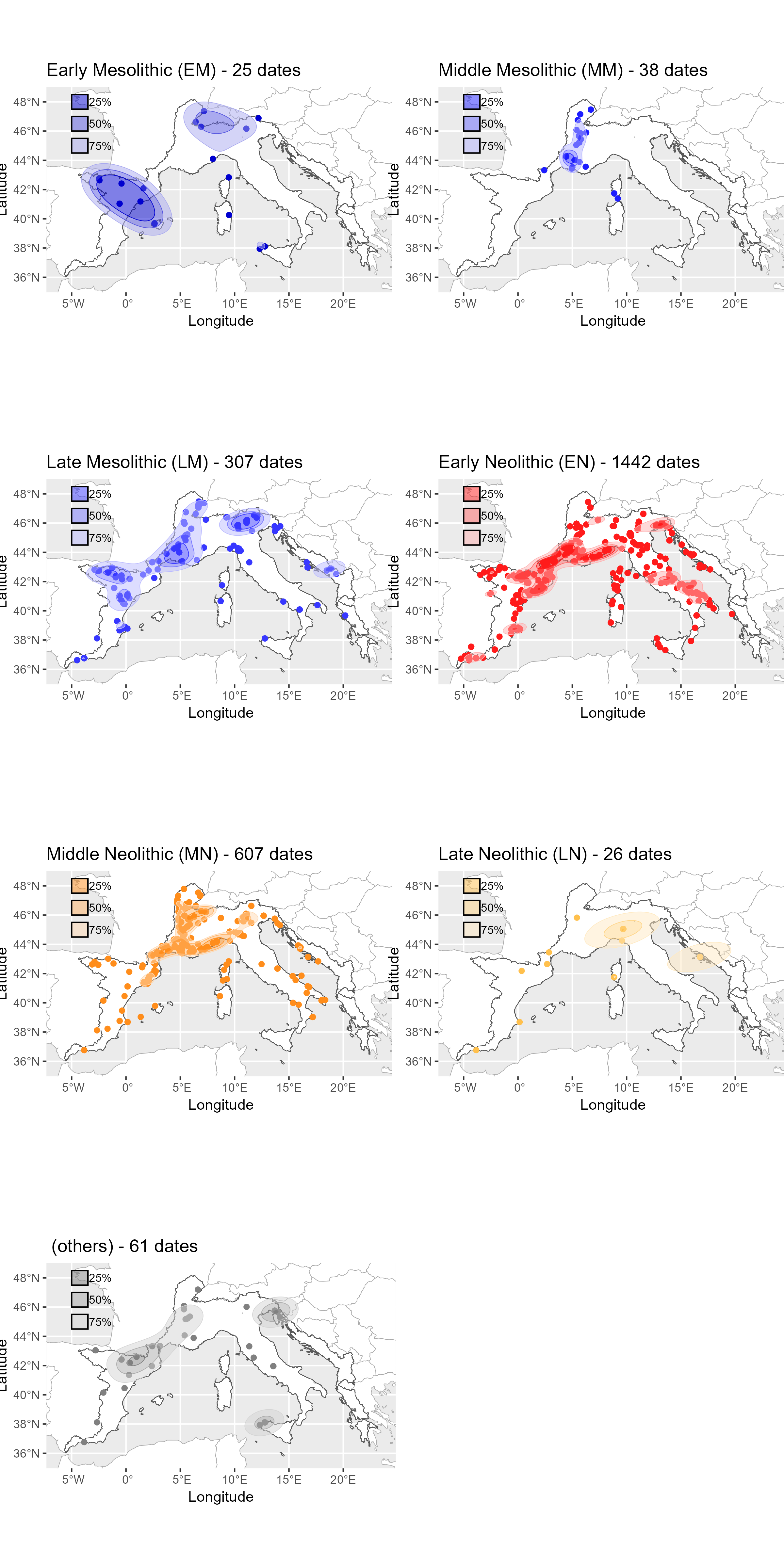
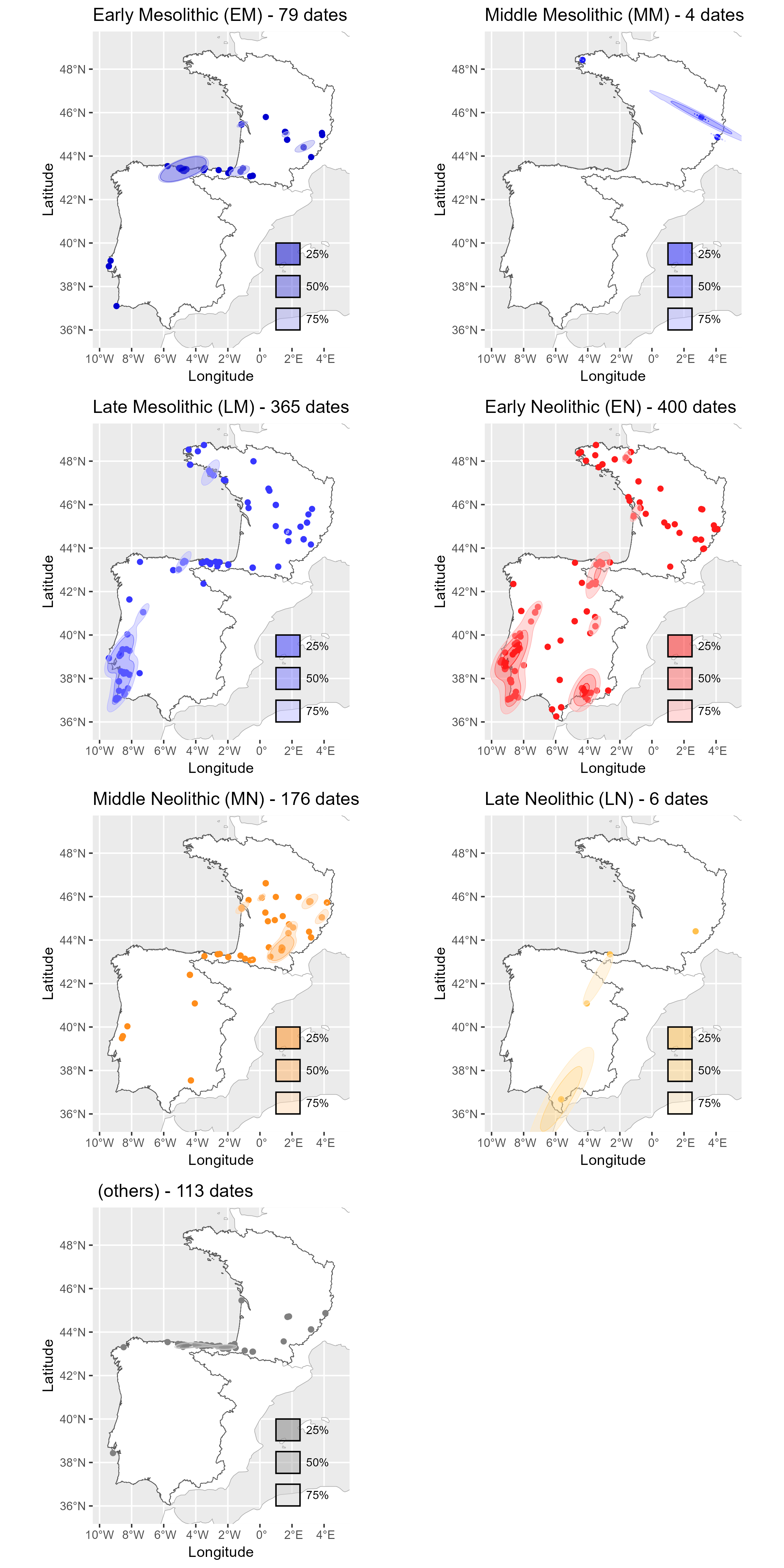
Neonet radiocarbon datasets: "NeoNet Med" (North-Central Mediterranean, location) and "NeoNet Atl" (European South Atlantic river basin, location), here filtered by periods.
- Studied periods
Studied periods are listed in the periods.tsv table:
| period | period_full_name | color |
|---|---|---|
| EM | Early Mesolithic |  |
| MM | Middle Mesolithic |  |
| LM | Late Mesolithic |  |
| LMEN | Late Mesolithic/Early Neolithic |  |
| UM | Undefined Mesolithic |  |
| EN | Early Neolithic |  |
| EMN | Early/Middle Neolithic |  |
| MN | Middle Neolithic |  |
| LN | Late Neolithic |  |
| UN | Undefined Neolithic |  |
NeoNet datasets
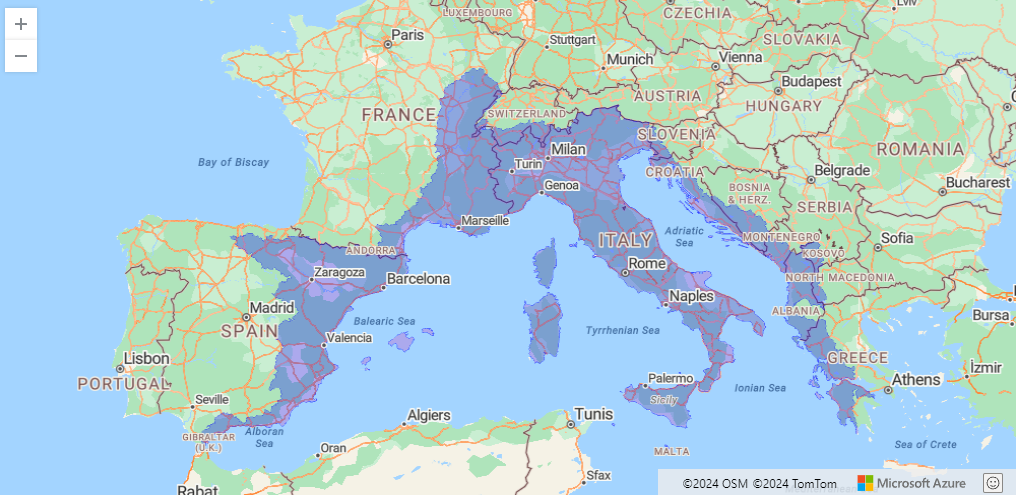 |
| 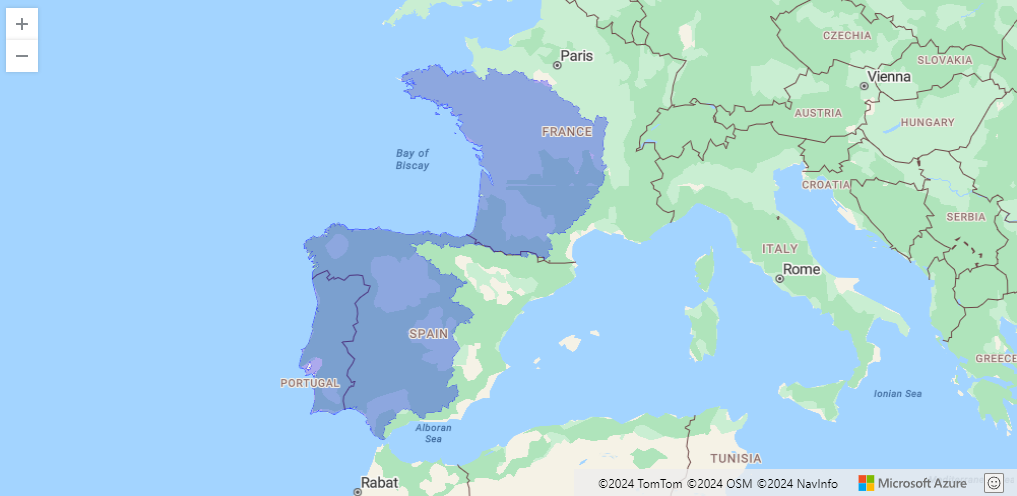 |
|
These datasets are harvested by the c14bazAAR package, functions get_c14data("neonet") and get_c14data("neonetatl")
NeoNet app
mapping the Late Mesolithic/Early Neolithic transition 
NeoNet app is an R Shiny application for mapping radiocarbon (C14). The application offers a mobile geographic window for date selection by location, various filters on chronology and date quality, a calibration window, and other tools to create a user-friendly interface supported by curated datasets of radiocarbon dates and archaeological contexts. NeoNet app is hosted on the server of the University of Pisa. This NeoNet app uses this radiocarbon dataset: https://doi.org/10.13131/archelogicadata-yb11-yb66 published as a data paper in the Journal of Open Archaeology Data and describe in this web document.
TODO
- On export action (download button), export this metadata:
- max SD
- selected periods
- dataset (Med, Atl) DOI
- timestamp
- bibliographical reference
NeoNet functions
radiocarbon management 
NeoNet functions enable the handling of radiocarbon dates sourced from the dataset or exported from the interactive app. Current functions cover:
Data
Data preparation
Starting by running these neo_*() functions to manage a new XLSX dataset. Sourcing functions:
source("R/neo_subset.R")
source("R/neo_bib.R")
source("R/neo_matlife.R")
source("R/neo_calib.R")
source("R/neo_merge.R")
source("R/neo_html.R")
source("R/neo_datamiss.R")
source("R/neo_datasum.R")
source("R/neo_doi.R")Read the new dataset and bibliographic file
data.c14 <- paste0(getwd(), "/inst/extdata/", "NeoNet_atl_ELR (1).xlsx")
df.bib <- paste0(getwd(), "/inst/extdata/", "NeoNet_atl_ELR.bib")Cleaning the dataset and making it conform to the published NeoNet dataset
df.c14 <- openxlsx::read.xlsx(data.c14)
df.c14 <- neo_subset(df.c14,
rm.C14Age = TRUE,
rm.Spatial = FALSE,
rm.Period = FALSE)
df.c14 <- neo_calib(df.c14)
neo_doi(df.c14)Prepare the dataset for the Shiny application by merging it with NeoNet Med, calculating materil life duration, and HTML popup layouts
df.c14 <- neo_merge(df.c14 = df.c14,
data.bib = data.bib,
merge.bib = F)
df.c14 <- neo_matlife(df.c14)
df.c14 <- neo_html(df.c14)Export the merged dataset
write.table(df.c14, "C:/Rprojects/neonet/R/app-dev/c14_dataset_med_x_atl.tsv",
sep = "\t",
row.names = FALSE)Data report
Calculate basic statistics
neo_datasum(df.c14)Calculate basic statistics: missing data
neo_datamiss(df.c14)

Missing data (empty cells)
Data alignment
Retrieve dates coming from other databases (with the c14bazAAR R package) and mapped to be compliant with the Neonet format (..., LM, EN, ...) and functions, using neo_dbs_parse(), a mapping table (XLSX) created with neo_dbs_create_ref(), and neo_dbs_align():
source("R/neo_dbs_parse.R")
source("R/neo_dbs_align.R")
# spatial and chronological limits
where <- sf::st_read("https://raw.githubusercontent.com/zoometh/neonet/main/doc/talks/2024-simep/roi.geojson", quiet = TRUE)
when <- c(-9000, -4000) # in cal BC
# parameters
l.dbs <- c("calpal", "medafricarbon", "agrichange", "bda", "calpal", "radon", "katsianis")
col.c14baz <- c("sourcedb", "site", "labnr", "c14age", "c14std", "period", "culture", "lon", "lat")
# collect the dates form different DBs, standardize the cultural period layout, filter on 'when' and 'where'
df <- neo_dbs_parse(l.dbs = l.dbs,
chr.interval.uncalBC = when,
roi = where,
col.c14baz = col.c14baz)
df.c14 <- neo_dbs_align(df,
mapping.file = "C:/Rprojects/neonet/doc/ref_table_per.xlsx")Alignments are done using the mapping file ref_table_per.xlsx, a default parameter in neo_dbs_align().
Mapping file
The XLSX file ref_table_per.xlsx has been created using:
df <- neo_dbs_parse(l.dbs = l.dbs,
chr.interval.uncalBC = when,
roi = where,
col.c14baz = col.c14baz)
# create the mapping file
neo_dbs_create_ref(df.all.res = df,
root.path = "C:/Rprojects/neonet/results",
outFile = "df_ref_per.xlsx")This mapping file ref_table_per.xlsx is a reference table to map cultural assessment coming from external DBs, collected throug c14bazAAR, to the Neonet one (..., LM, EN, ...) format. This XLSX file has to be updated manually by specialists.
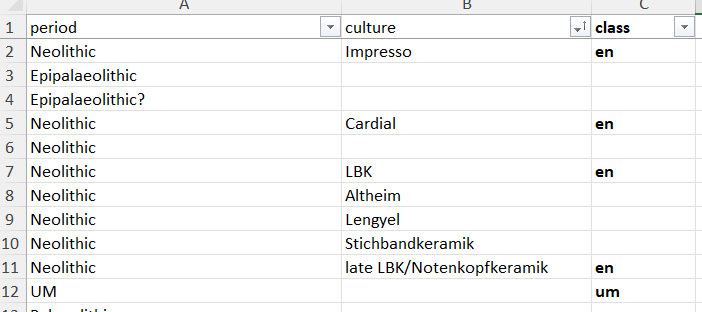
Equivalences between third part databases cultural assessment (columns 'period' and 'culture') and Neonet classes (column 'class')
For example:
df.c14 <- neo_dbs_align(df,
mapping.file = "C:/Rprojects/neonet/doc/ref_table_per.xlsx")
head(df.c14)Gives a dataframe where all fields have been renamed to be parsed with the Neonet functions. Among this mapping the column 'Period' with, for example, MM Middle Mesolithic) maps the bda period = Mésolithique 1 and culture = Capsien ancien or Capsien typique (columns 'db_period' and 'db_culture'):
| sourcedb | SiteName | LabCode | C14Age | C14SD | db_period | db_culture | Period | lon | lat |
|---|---|---|---|---|---|---|---|---|---|
| bda | Mechta el Arbi | Poz-92231 | 6600 | 80 | Mésolithique 1 | Capsien ancien | MM | 6.130900 | 36.09940 |
| bda | Mechta el Arbi | Poz-92232 | 6250 | 130 | Mésolithique 1 | Capsien ancien | MM | 6.130900 | 36.09940 |
| bda | Mechta el Arbi | Poz-92230 | 3500 | 120 | Mésolithique 1 | Capsien ancien | MM | 6.130900 | 36.09940 |
| bda | Kef Zoura D | UOC-2925 | 7787 | 48 | Mésolithique 1 | Capsien typique | MM | 7.682121 | 35.04205 |
| bda | Bortal Fakher | L-240A | 6930 | 200 | Mésolithique 1 | Capsien typique | MM | 8.176087 | 34.35480 |
| bda | Relilaï (B) | Gif-1714 | 7760 | 180 | Mésolithique 1 | Capsien typique | MM | 7.694694 | 35.04480 |
Outlier dates
To filter aberrant dates, a combination of different function allow to retrieve the current information (once mapped to the Neonet layout) of these potential outliers and their original information (from their source database).
Strati app and strati analysis overall Workflow

Here the dates 260 (circled in red), 396 and 345 seem aberrant
To check the info of the date numbered `260`, do:
```R
source("R/neo_find_date.R")
source("R/neo_dbs_info_date.R")
abber.date <- neo_find_date(df = isochr$data, print.it = FALSE, idf.dates = 260)
ad <- neo_dbs_info_date(df.c14 = df.c14, LabCode = abber.date$labcode)
```
Gives:
```
[1] "Reads a 'sf' dataframe"
[1] "Layout for 'aberrant dates' format:"
neonetatl Sac-1676 El Retamar -6263 EN None None
```
Where `neonetatl` is the source DB, `Sac-1676` is the labnum, `El Retamar` the site name, `-6263` the weighted mean (cal BC), `EN` the period (Early Neolithic), `None` the culture (no data) and the second `None` a place holder for a description explaining why this date has been discarted.
If the archaeological documentation shows that date `Sac-1676` (*aka* `260`) is wrong (mixed assemblage, possibly coming from another layer, etc.). The last line `neonetatl Sac-1676 El Retamar -6263 EN None None` can be pasted as it into the [c14_aberrant_dates.tsv](https://github.com/zoometh/neonet/blob/main/inst/extdata/c14_aberrant_dates.tsv) file.
More info can be found for this date, reusing the `ad` dataframe. Running the following functions helps to contextualize the date.
```R
source("R/neo_dbs_info_date_src.R")
neo_dbs_info_date_src(db = ad$sourcedb,
LabCode = ad$LabCode)
```
Gives:
```
sourcedb sourcedb_version labnr c14age c14std site feature period material species country lat
1 neonetatl 2023-12-08 Sac-1676 7400 100 El Retamar Conchero 6 EN shell

Screenshot of the 'c14_to_remove.tsv' table

NeoNet dataset SPD with default period colors
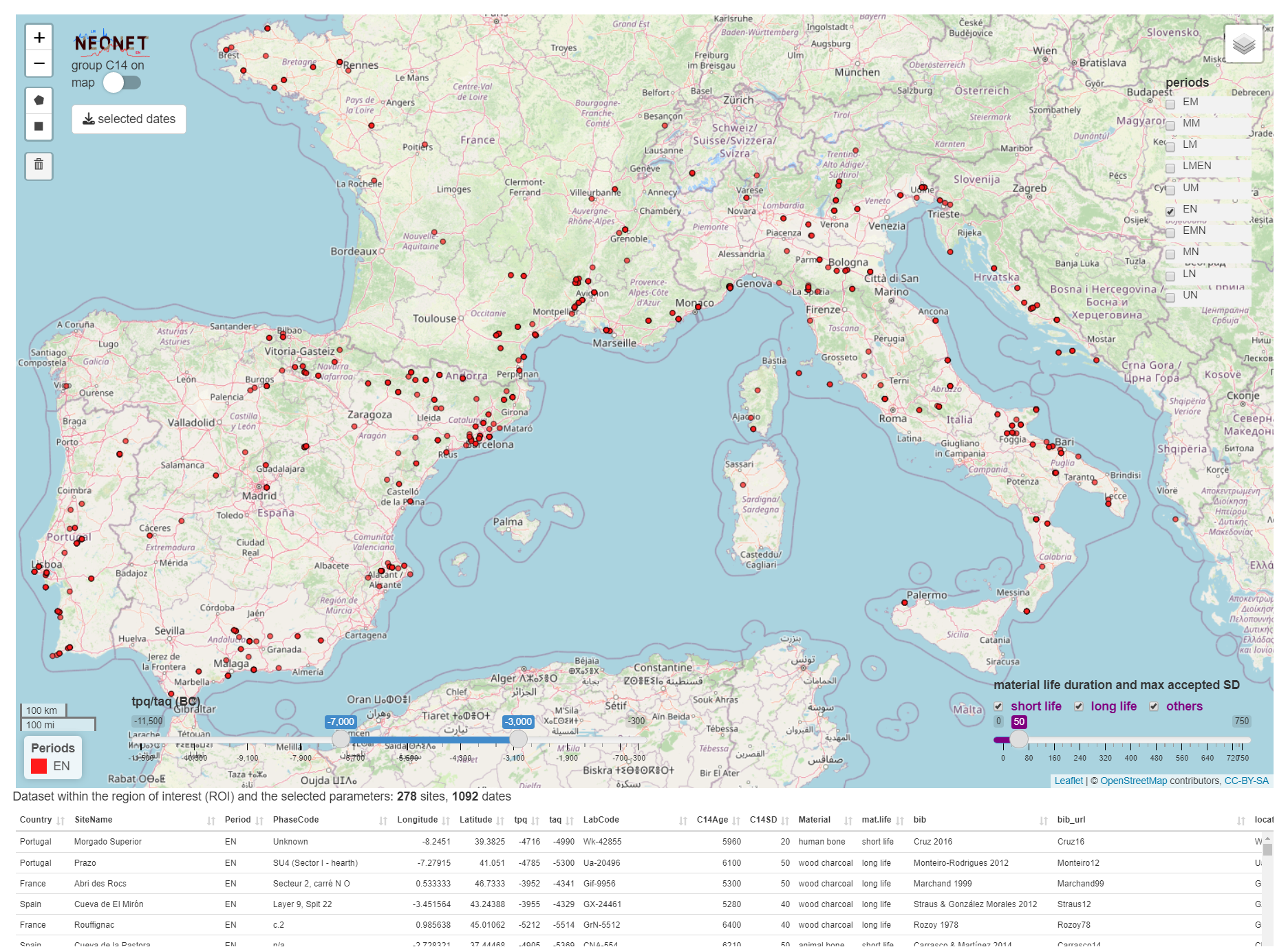
Screen capture of the NeoNet app before the export of the `neonet-data-2023-09-24.geojson` file: Early Neolithic (EN) dates only having a SD ≤ 50, and calBC interval between -7000 and -3000
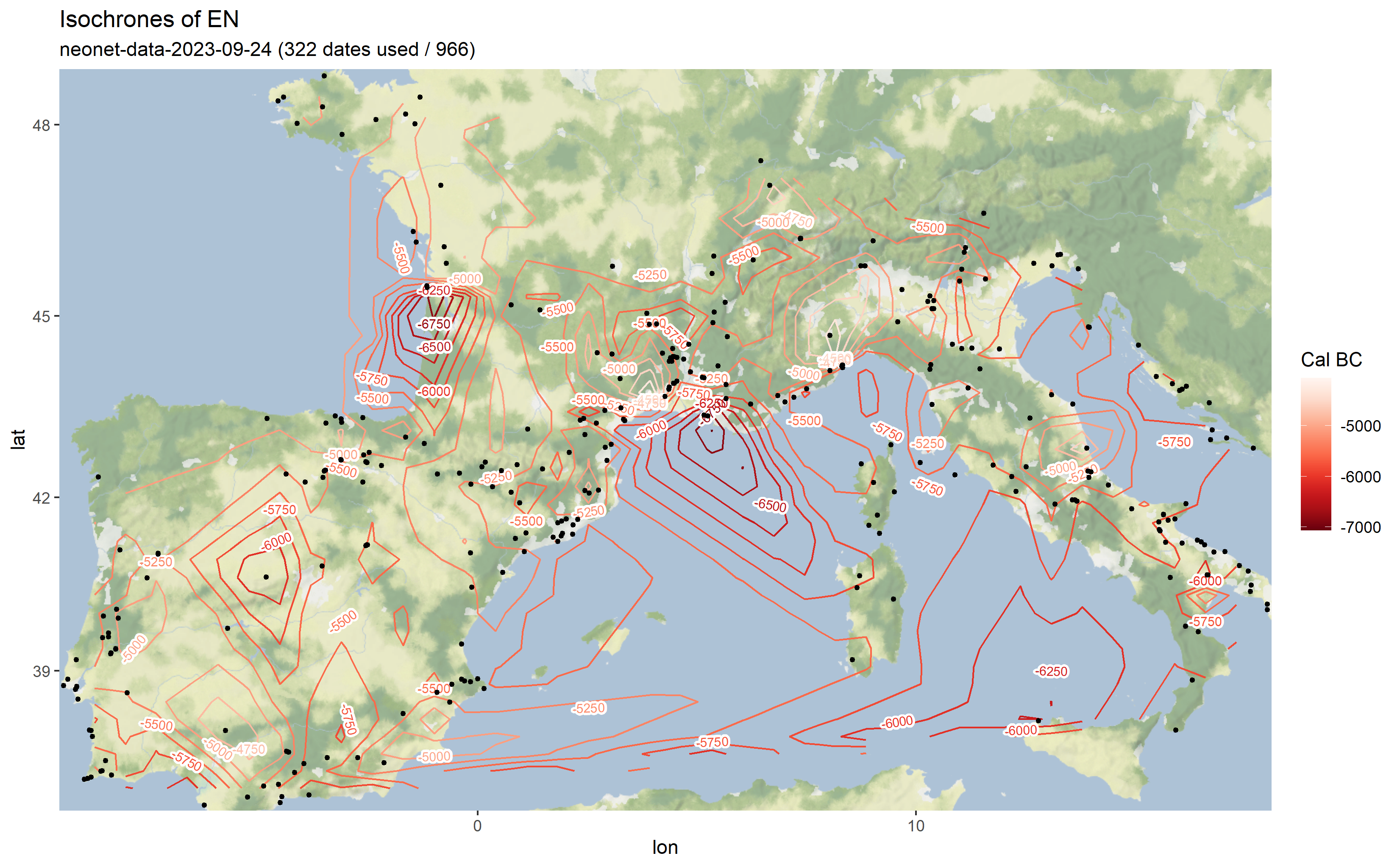
Output map from the `neonet-data-2023-09-24.geojson`
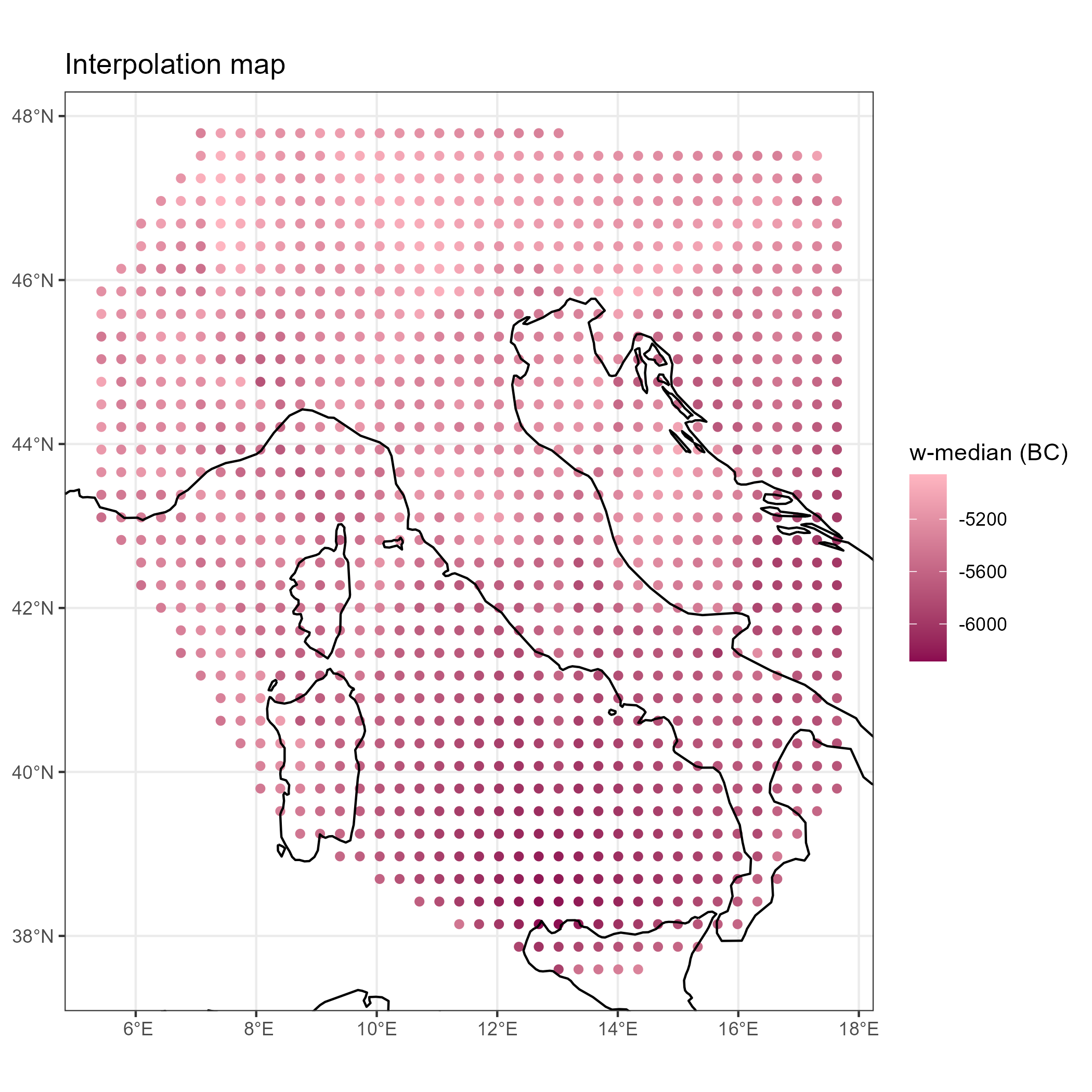
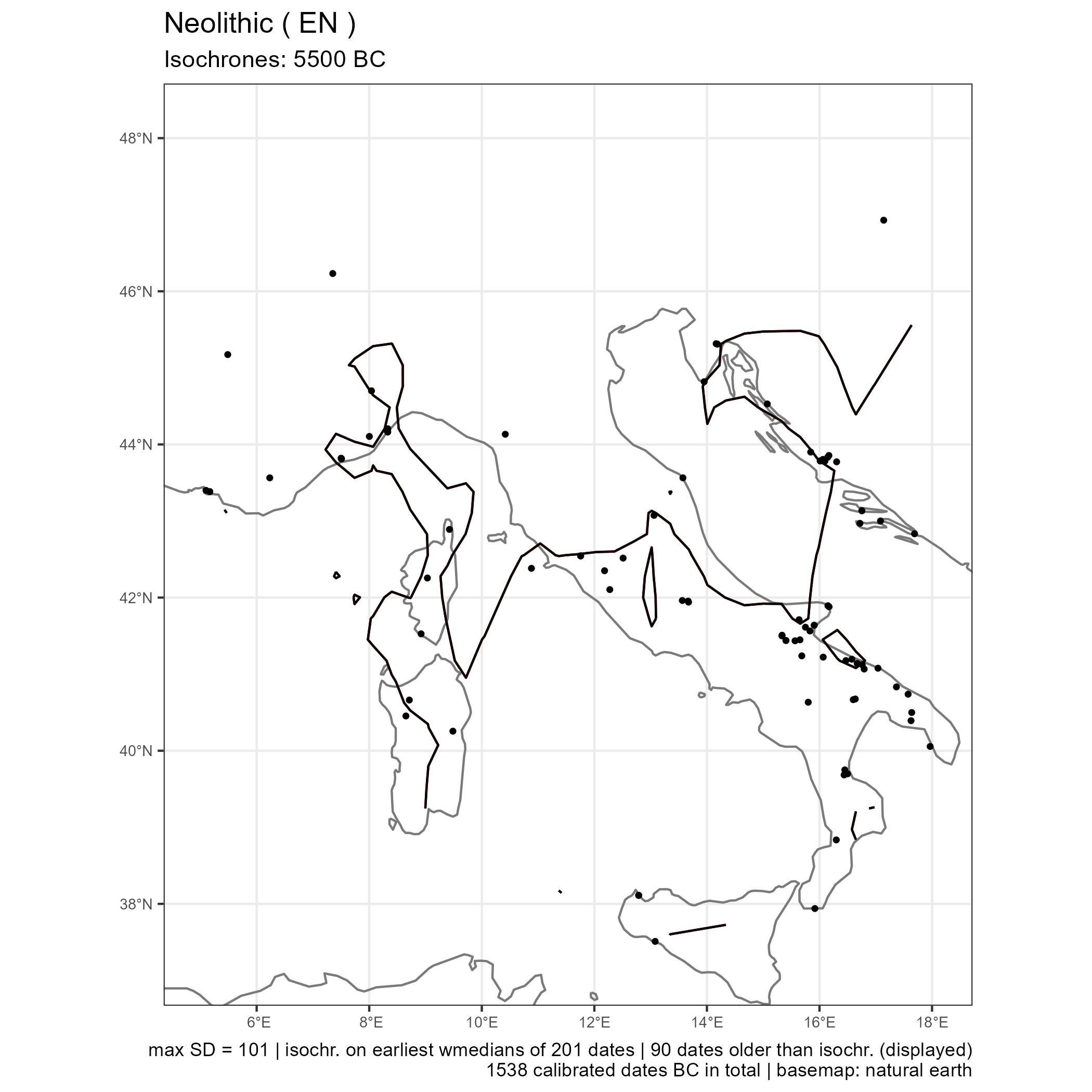
Weighted medians interpolated
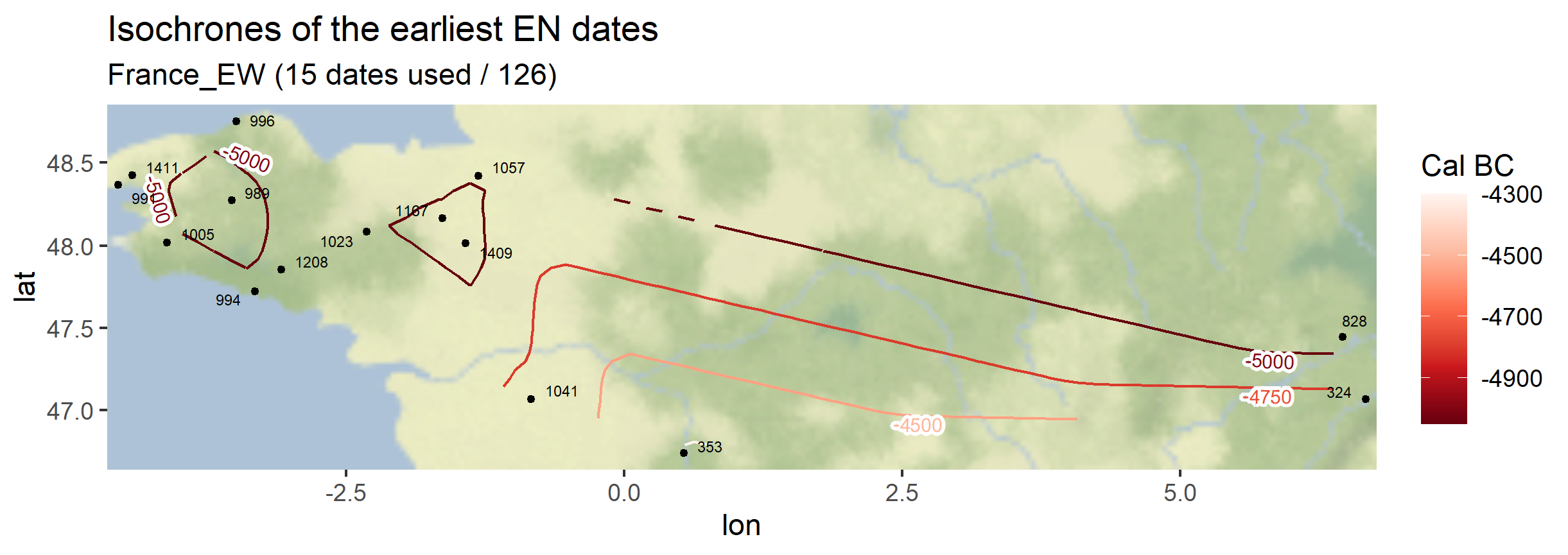

Output maps from the `1_AOI_France_E-W.geojson`: earliest Neolithic dates and latest Paleolithic dates
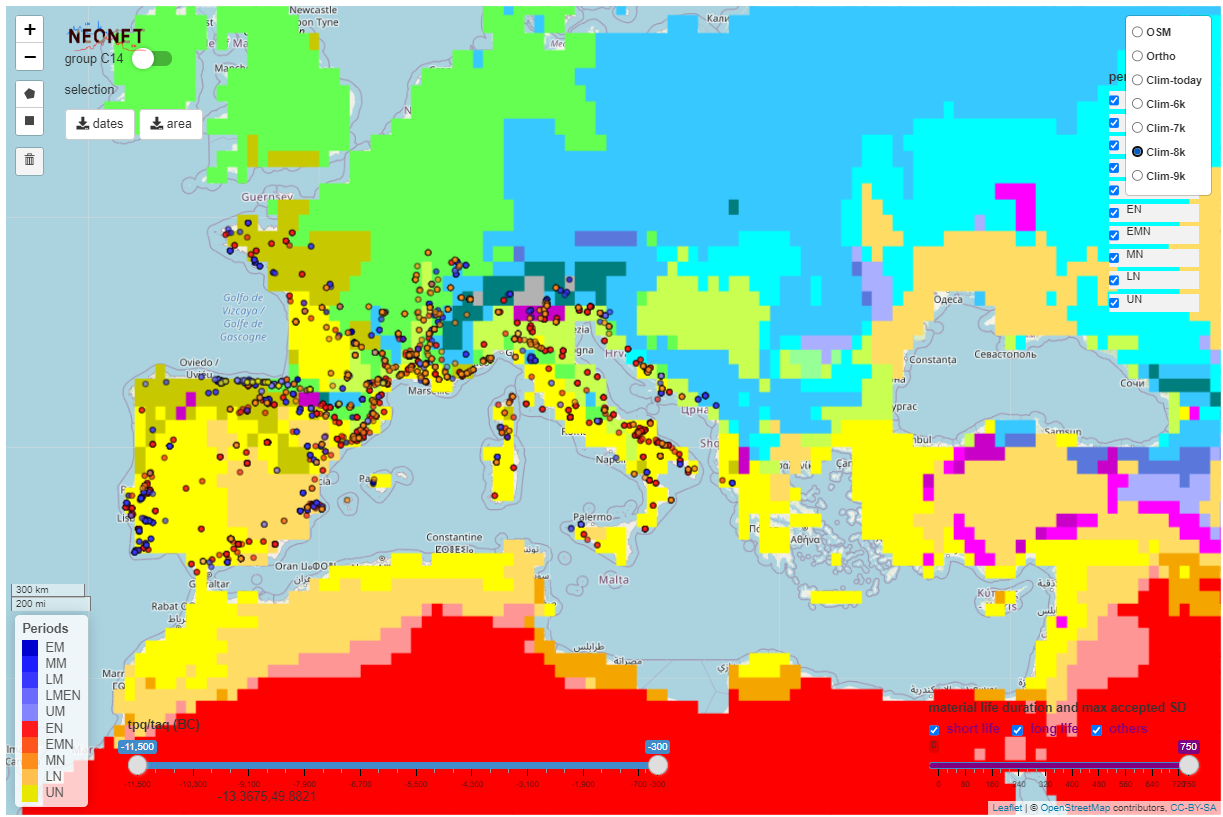
The Koppen Climate Classification calculated for 8,000 BP (8k) with the pastclim R package and hosted on a GeoServer
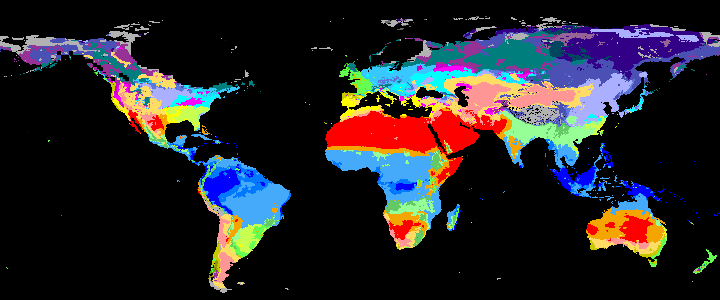 |koppen_11k [download](https://raw.githubusercontent.com/zoometh/neonet/main/doc/data/clim/koppen_11k.tif)|
|
|koppen_11k [download](https://raw.githubusercontent.com/zoometh/neonet/main/doc/data/clim/koppen_11k.tif)|
| 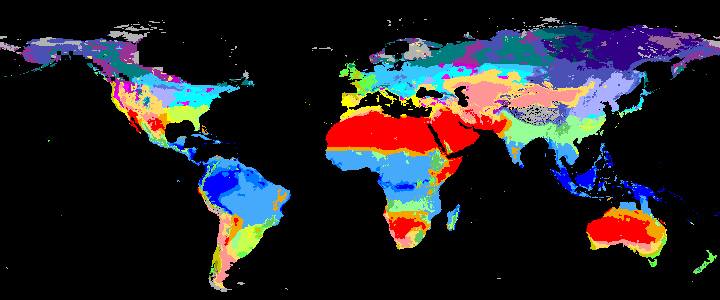 |koppen_10k [download](https://raw.githubusercontent.com/zoometh/neonet/main/doc/data/clim/koppen_10k.tif)|
|
|koppen_10k [download](https://raw.githubusercontent.com/zoometh/neonet/main/doc/data/clim/koppen_10k.tif)|
| 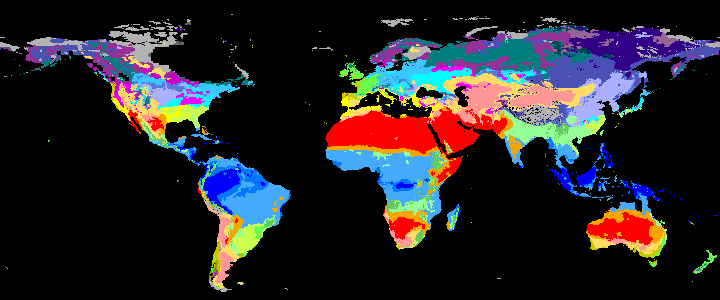 |koppen_9k [download](https://raw.githubusercontent.com/zoometh/neonet/main/doc/data/clim/koppen_9k.tif)|
|
|koppen_9k [download](https://raw.githubusercontent.com/zoometh/neonet/main/doc/data/clim/koppen_9k.tif)|
| 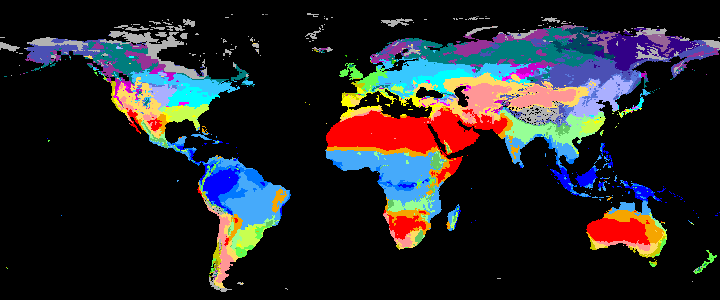 |koppen_8k [download](https://raw.githubusercontent.com/zoometh/neonet/main/doc/data/clim/koppen_8k.tif)|
|
|koppen_8k [download](https://raw.githubusercontent.com/zoometh/neonet/main/doc/data/clim/koppen_8k.tif)|
|  |koppen_7k [download](https://raw.githubusercontent.com/zoometh/neonet/main/doc/data/clim/koppen_7k.tif)|
|
|koppen_7k [download](https://raw.githubusercontent.com/zoometh/neonet/main/doc/data/clim/koppen_7k.tif)|
|  |koppen_6k [download](https://raw.githubusercontent.com/zoometh/neonet/main/doc/data/clim/koppen_6k.tif)|
Past Koppen Climate Classification calculated in Kyears BP with the pastclim R package
### Classes
The Koppen Climate Classes are listed [here](https://github.com/zoometh/neonet/blob/main/inst/extdata/koppen.tsv)
| code | num | value | hexa color | color |
|------------|-------:|:------------------------------------------|:-------|:---------------------------------------------------------|
| Af | 1 | Tropical, rainforest | 0000FF |  |
| Am | 2 | Tropical, monsoon | 0078FF |  |
| Aw | 3 | Tropical, savannah | 46AAF |  |
| BWh | 4 | Arid, desert, hot | FF0000 |  |
| BWk | 5 | Arid, desert, cold | FF9696 |  |
| BSh | 6 | Arid, steppe, hot | F5A500 |  |
| BSk | 7 | Arid, steppe, cold | FFDC64 |  |
| Csa | 8 | Temperate, dry summer, hot summer | FFFF00 |  |
| Csb | 9 | Temperate, dry summer, warm summer | C8C800 |  |
| Csc | 10 | Temperate, dry summer, cold summer | 969600 |  |
| Cwa | 11 | Temperate, dry winter, hot summer | 96FF96 |  |
| Cwb | 12 | Temperate, dry winter, warm summer | 64C864 |  |
| Cwc | 13 | Temperate, dry winter, cold summer | 329632 |  |
| Cfa | 14 | Temperate, no dry season, hot summer | C8FF50 |  |
| Cfb | 15 | Temperate, no dry season, warm summer | 64FF50 |  |
| Cfc | 16 | Temperate, no dry season, cold summer | 32C800 |  |
| Dsa | 17 | Cold, dry summer, hot summer | FF00FF |  |
| Dsb | 18 | Cold, dry summer, warm summer | C800C8 |  |
| Dsc | 19 | Cold, dry summer, cold summer | 963296 |  |
| Dsd | 20 | Cold, dry summer, very cold winter | 966496 |  |
| Dwa | 21 | Cold, dry winter, hot summer | AAAF |  |
| Dwb | 22 | Cold, dry winter, warm summer | 5A78DC |  |
| Dwc | 23 | Cold, dry winter, cold summer | 4B50B4 |  |
| Dwd | 24 | Cold, dry winter, very cold winter | 320087 |  |
| Dfa | 25 | Cold, no dry season, hot summer | 00FFFF |  |
| Dfb | 26 | Cold, no dry season, warm summer | 37C8FF |  |
| Dfc | 27 | Cold, no dry season, cold summer | 007D7D |  |
| Dfd | 28 | Cold, no dry season, very cold winter | 00465F |  |
| ET | 29 | Polar, tundra | B2B2B2 |  |
| EF | 30 | Polar, frost | 666666 |  |
### Koppen functions
Koppen functions are designed not only for the Neonet dataset, but also for all radiocarbon dataset respecting the minimum data stracture (site, labcode, x, y, etc.).
#### Extract
This set of functions creates an interactive dataset of `df.c14` dates and the climates to which they belong.
```R
kcc.file <- c("koppen_6k.tif", "koppen_7k.tif", "koppen_8k.tif",
"koppen_9k.tif", "koppen_10k.tif", "koppen_11k.tif")
source("R/neo_kcc_extract.R")
df_kcc <- neo_kcc_extract(df.c14 = df.c14, kcc.file = kcc.file)
source("R/neo_kcc_extract_longformat.R")
df_kcc_long <- neo_kcc_extract_longformat(df_kcc)
source("R/neo_dbs_info_dates_datatable.R")
dt.out <- neo_dbs_info_dates_datatable(df.c14 = df_kcc_long,
fields = c("SiteName", "code", "Period", "median", "map", "LabCode", "db_period", "db_culture", "sourcedb", "X", "Y", "color"),
font.size = "16pt")
## Not Run
# htmlwidgets::saveWidget(dt.out, "C:/Rprojects/neonet/doc/talks/2024-simep/img/dates_kcc.html")
```
#### Map
The `neo_kcc_map()` creates a KCC map with a layer of dates above
```R
source("R/config.R") # default variables: column names mapping, colors, etc.
df <- c14bazAAR::get_c14data("neonet")
df <- sf::st_as_sf(df, coords = c("lon", "lat"), crs = 4326)
neo_kcc_map(df.c14 = df,
kcc = "C:/Rprojects/neonet/doc/data/clim/koppen_7k.tif",
export = TRUE,
fileOut = "neonet_kcc.png" )
```
Gives:
|koppen_6k [download](https://raw.githubusercontent.com/zoometh/neonet/main/doc/data/clim/koppen_6k.tif)|
Past Koppen Climate Classification calculated in Kyears BP with the pastclim R package
### Classes
The Koppen Climate Classes are listed [here](https://github.com/zoometh/neonet/blob/main/inst/extdata/koppen.tsv)
| code | num | value | hexa color | color |
|------------|-------:|:------------------------------------------|:-------|:---------------------------------------------------------|
| Af | 1 | Tropical, rainforest | 0000FF |  |
| Am | 2 | Tropical, monsoon | 0078FF |  |
| Aw | 3 | Tropical, savannah | 46AAF |  |
| BWh | 4 | Arid, desert, hot | FF0000 |  |
| BWk | 5 | Arid, desert, cold | FF9696 |  |
| BSh | 6 | Arid, steppe, hot | F5A500 |  |
| BSk | 7 | Arid, steppe, cold | FFDC64 |  |
| Csa | 8 | Temperate, dry summer, hot summer | FFFF00 |  |
| Csb | 9 | Temperate, dry summer, warm summer | C8C800 |  |
| Csc | 10 | Temperate, dry summer, cold summer | 969600 |  |
| Cwa | 11 | Temperate, dry winter, hot summer | 96FF96 |  |
| Cwb | 12 | Temperate, dry winter, warm summer | 64C864 |  |
| Cwc | 13 | Temperate, dry winter, cold summer | 329632 |  |
| Cfa | 14 | Temperate, no dry season, hot summer | C8FF50 |  |
| Cfb | 15 | Temperate, no dry season, warm summer | 64FF50 |  |
| Cfc | 16 | Temperate, no dry season, cold summer | 32C800 |  |
| Dsa | 17 | Cold, dry summer, hot summer | FF00FF |  |
| Dsb | 18 | Cold, dry summer, warm summer | C800C8 |  |
| Dsc | 19 | Cold, dry summer, cold summer | 963296 |  |
| Dsd | 20 | Cold, dry summer, very cold winter | 966496 |  |
| Dwa | 21 | Cold, dry winter, hot summer | AAAF |  |
| Dwb | 22 | Cold, dry winter, warm summer | 5A78DC |  |
| Dwc | 23 | Cold, dry winter, cold summer | 4B50B4 |  |
| Dwd | 24 | Cold, dry winter, very cold winter | 320087 |  |
| Dfa | 25 | Cold, no dry season, hot summer | 00FFFF |  |
| Dfb | 26 | Cold, no dry season, warm summer | 37C8FF |  |
| Dfc | 27 | Cold, no dry season, cold summer | 007D7D |  |
| Dfd | 28 | Cold, no dry season, very cold winter | 00465F |  |
| ET | 29 | Polar, tundra | B2B2B2 |  |
| EF | 30 | Polar, frost | 666666 |  |
### Koppen functions
Koppen functions are designed not only for the Neonet dataset, but also for all radiocarbon dataset respecting the minimum data stracture (site, labcode, x, y, etc.).
#### Extract
This set of functions creates an interactive dataset of `df.c14` dates and the climates to which they belong.
```R
kcc.file <- c("koppen_6k.tif", "koppen_7k.tif", "koppen_8k.tif",
"koppen_9k.tif", "koppen_10k.tif", "koppen_11k.tif")
source("R/neo_kcc_extract.R")
df_kcc <- neo_kcc_extract(df.c14 = df.c14, kcc.file = kcc.file)
source("R/neo_kcc_extract_longformat.R")
df_kcc_long <- neo_kcc_extract_longformat(df_kcc)
source("R/neo_dbs_info_dates_datatable.R")
dt.out <- neo_dbs_info_dates_datatable(df.c14 = df_kcc_long,
fields = c("SiteName", "code", "Period", "median", "map", "LabCode", "db_period", "db_culture", "sourcedb", "X", "Y", "color"),
font.size = "16pt")
## Not Run
# htmlwidgets::saveWidget(dt.out, "C:/Rprojects/neonet/doc/talks/2024-simep/img/dates_kcc.html")
```
#### Map
The `neo_kcc_map()` creates a KCC map with a layer of dates above
```R
source("R/config.R") # default variables: column names mapping, colors, etc.
df <- c14bazAAR::get_c14data("neonet")
df <- sf::st_as_sf(df, coords = c("lon", "lat"), crs = 4326)
neo_kcc_map(df.c14 = df,
kcc = "C:/Rprojects/neonet/doc/data/clim/koppen_7k.tif",
export = TRUE,
fileOut = "neonet_kcc.png" )
```
Gives:
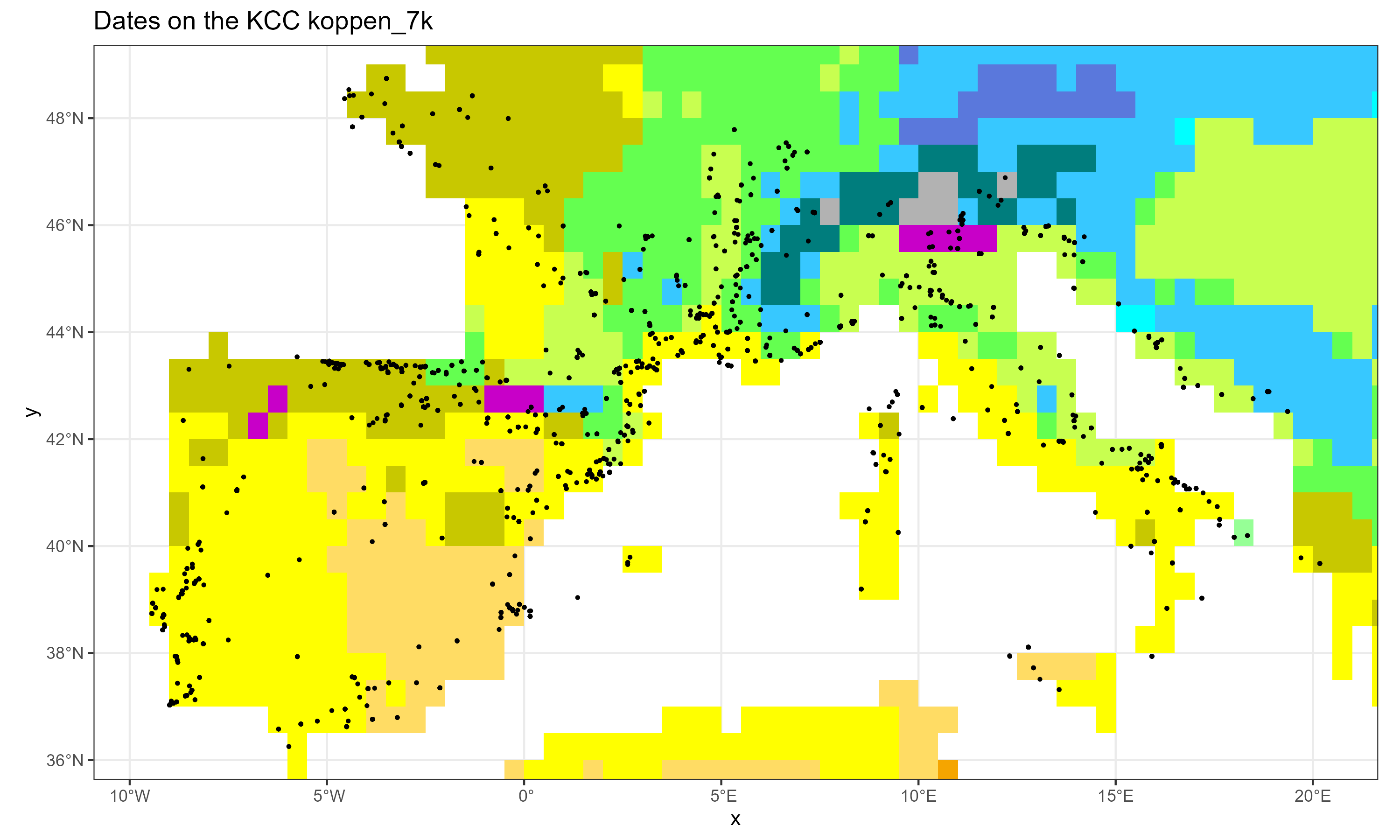
The neonet dataset over the KCC 7k
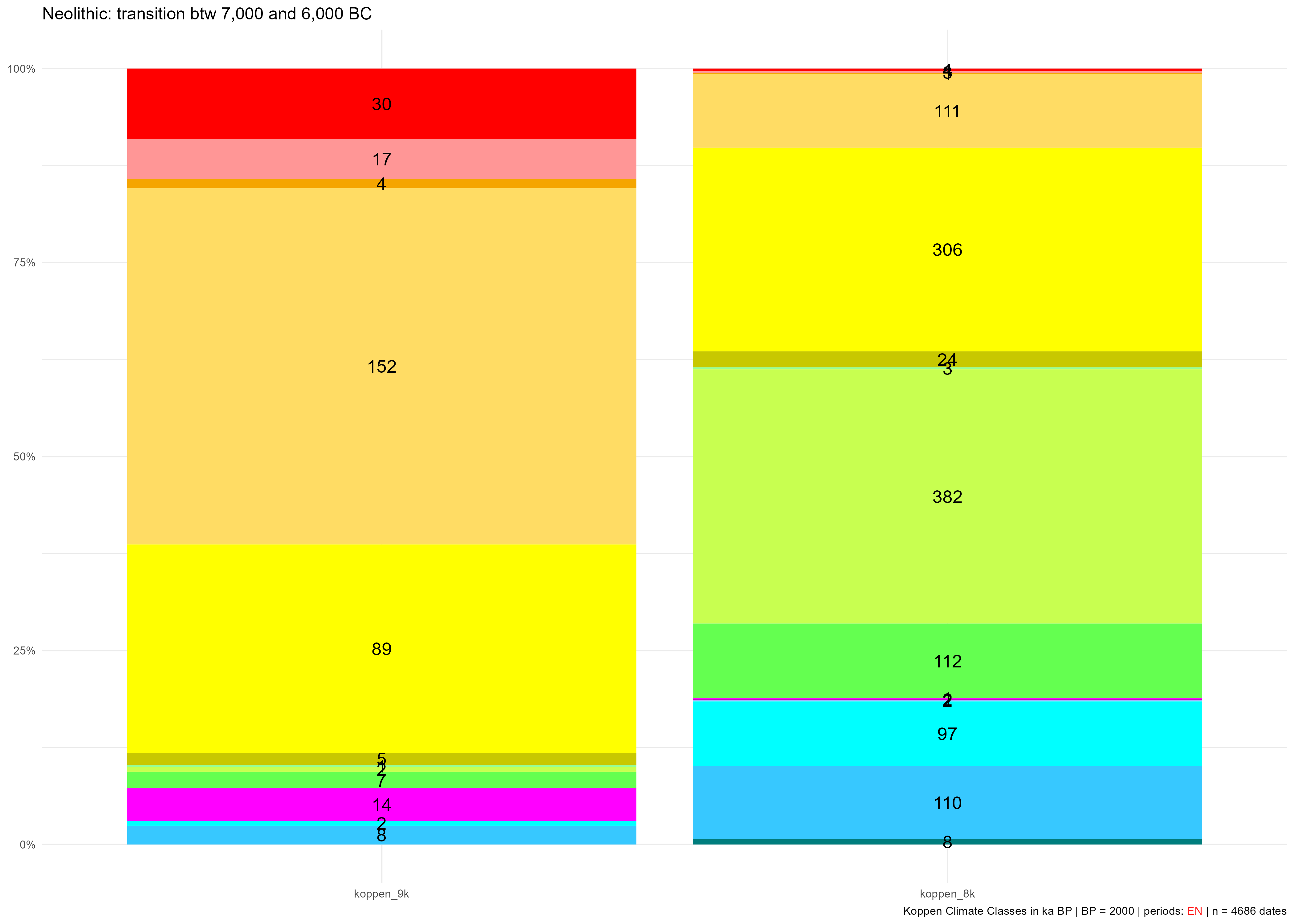
KCC occupied during the EN between 7,000 and 6,000 BC (9 ka and 8 ka BP) with counts of sites belonging to these time slices
 NeoNet-strati is an online R Shiny interactive app to record the stratigraphy of NeoNet's archaeological sites in an editable dataframe based on `LabCode` identifiers.
```mermaid
flowchart TD
A[NeoNet dataset] --is read by--> B{{neonet-strati}}:::neonetshiny;
B --edit
NeoNet-strati is an online R Shiny interactive app to record the stratigraphy of NeoNet's archaeological sites in an editable dataframe based on `LabCode` identifiers.
```mermaid
flowchart TD
A[NeoNet dataset] --is read by--> B{{neonet-strati}}:::neonetshiny;
B --edit
site stratigraphy--> B;
B --export
site stratigraphy
file--> C[Roc du Dourgne_2023-07-30.csv];
C --is read by--> D{{neonet_strat}}:::neonetfunct;
D --export --> E[maps
charts
listings
...];
classDef neonetfunct fill:#e3c071;
classDef neonetshiny fill:#71e37c;
```
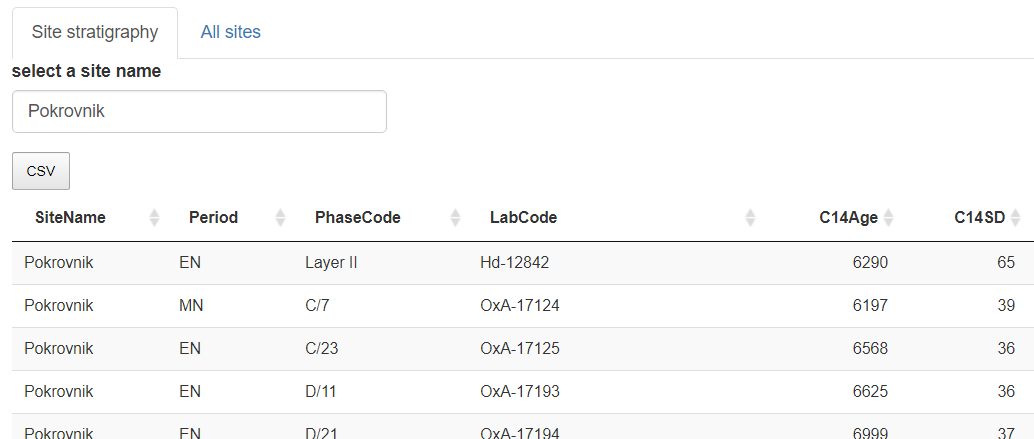
Panel "Site Stratigraphy" editable dataframe. By default the app opens on "Pokrovnik"

Panel "All sites". Selection of the "Roc du Dourgne" site
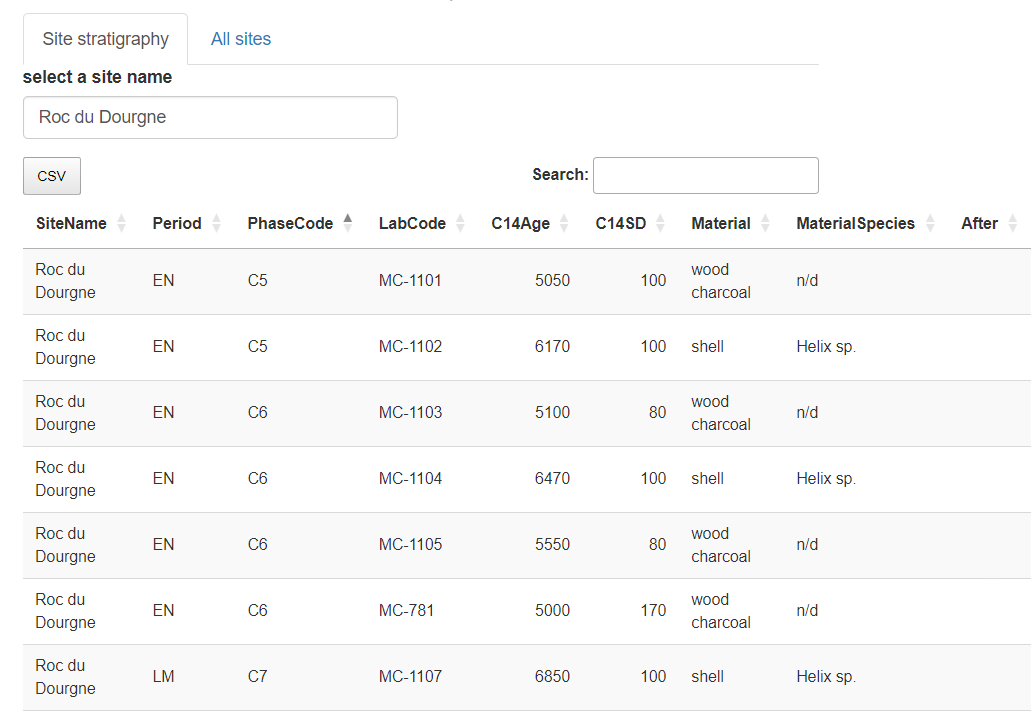
"Roc du Dourgne" site sorted on its "PhaseCode"

"Roc du Dourgne" stratgraphical relationships (column "After") after edition
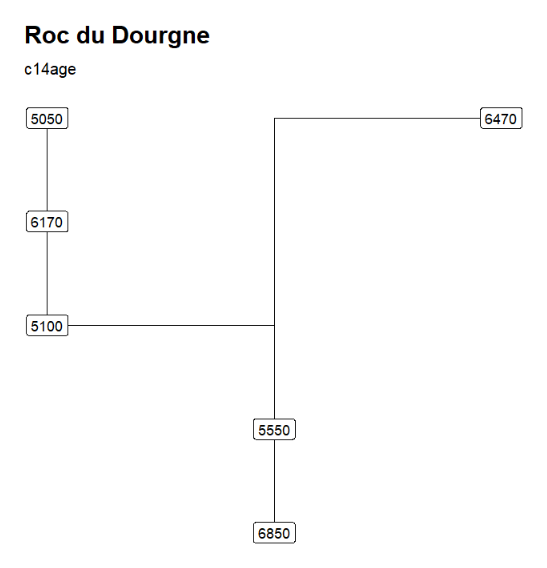
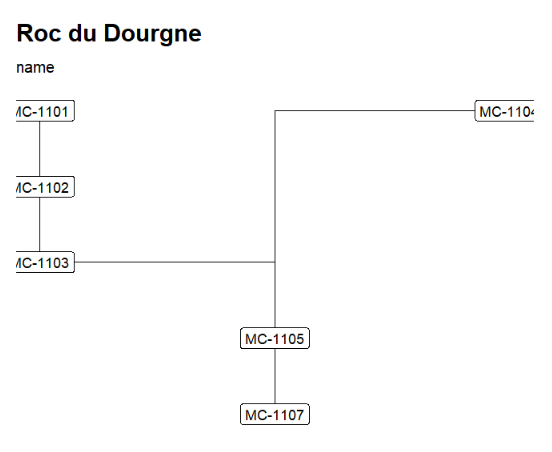
"Roc du Dourgne" stratgraphical relationships using LabCode identifiers, ordered on the "LabCode" column, displaying the C14Age (left) and the LabCode (right)
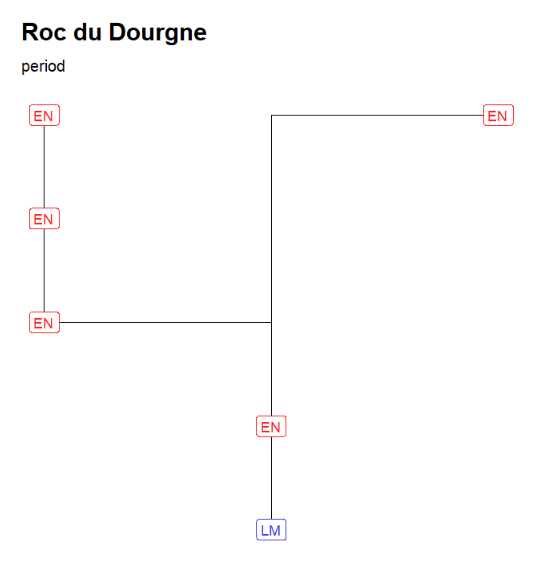
"Roc du Dourgne" stratgraphical relationships using LabCode identifiers, ordered on the "LabCode" column

Screen capture of [NN_and_LF.html](https://historical-time.github.io/caa23/neonet/results/NN_and_LF.html)